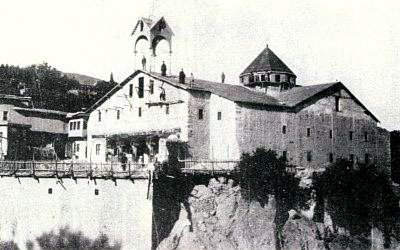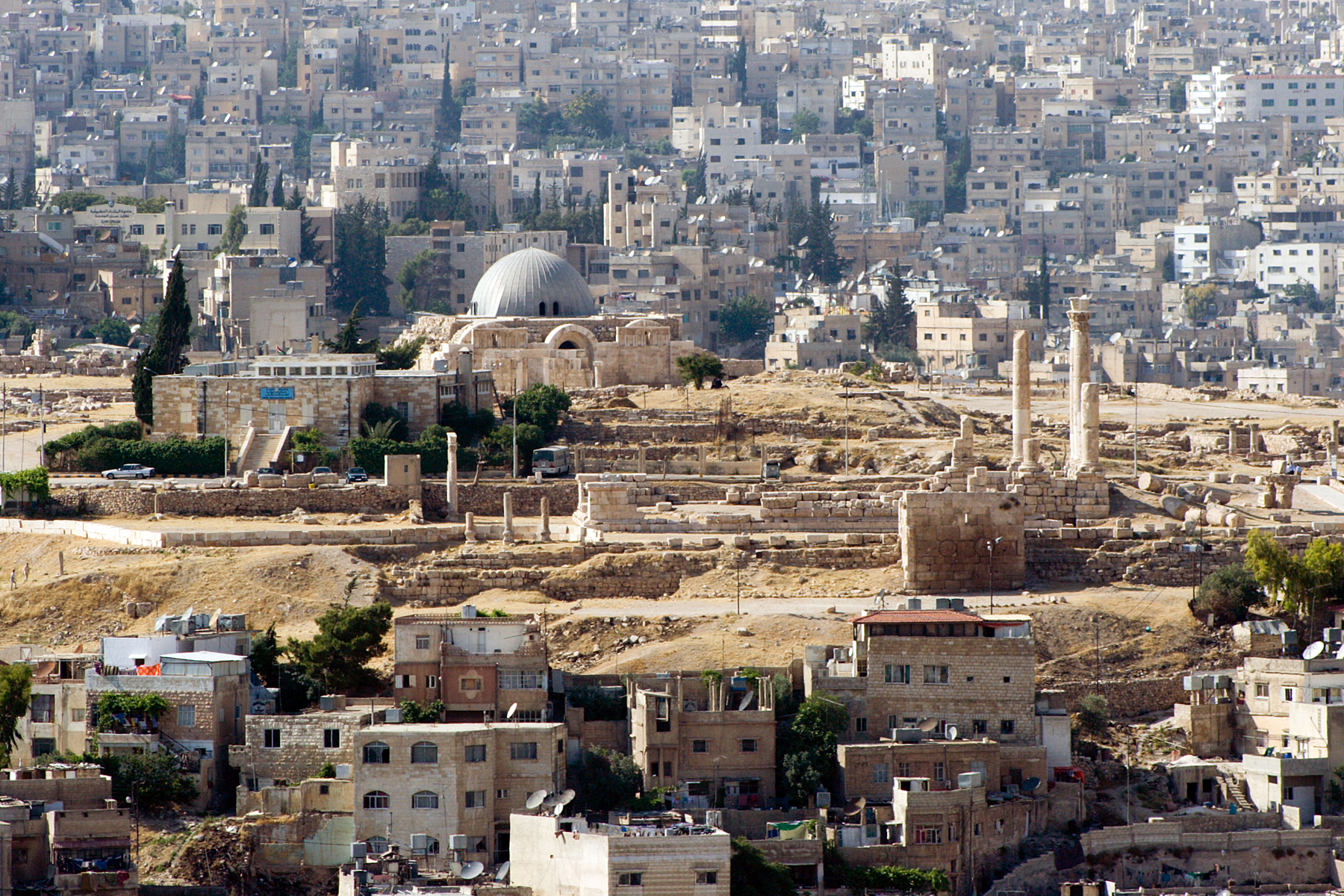|
Mustafa Wahbi
Mustafa Wahbi Tal ( ar, مصطفى وهبي التل; 25 May 189924 May 1949), also known by his pen name Arar ( ar, عرار), was a Jordanian poet, writer, teacher and civil servant, widely regarded as Jordan's most prominent poet and among the best-known Jordanian poets among Arab readers. Born in Irbid in the Ottoman Empire on 25 May 1899, Tal completed his elementary education in his hometown, later leaving to complete his high school education in Damascus. His rebellious and stubborn temperament would appear as early as his high school years in Damascus, when he would be exiled several times by the Ottoman authorities for participating in school strikes against their policies in the region. In his adulthood, Tal would be imprisoned and exiled several times for democratic activism or for insulting high-ranking officials by the governments of the Arab Kingdom of Syria, and, after its downfall, by the government of the Emirate of Transjordan. His first job was in Karak, Trans ... [...More Info...] [...Related Items...] OR: [Wikipedia] [Google] [Baidu] |
Irbid
Irbid ( ar, إِربِد), known in ancient times as Arabella or Arbela (Άρβηλα in Ancient Greek language, Ancient Greek), is the capital and largest city of the Irbid Governorate. It also has the second largest metropolitan population in Jordan after Amman, with a population of around 2,003,800. Irbid is located about north of Amman on the northern ridge of the Gilead, equidistant from Pella, Jordan, Pella, Beit Ras (Capitolias), and Um Qais, and approximately south of the Syrian border. Irbid was built on successive Early Bronze Age settlements and was possibly the Hebrew Bible, biblical Beth Arbel and the Arbila of the Decapolis, a Hellenistic league of the 1st century BCE through the 2nd century CE. The population of Irbid swelled in the late 19th century, and prior to 1948 it served as a significant centre of transit trade. Irbid is the second largest metropolitan in Jordan by population after Amman. But as a city Irbid is the third largest one after Amman and Zarqa ... [...More Info...] [...Related Items...] OR: [Wikipedia] [Google] [Baidu] |
Arapgir
Arapgir ( hy, Արաբկիր; ku, Erebgir) is a town and district of Malatya Province, Turkey. As of 2000 it had a population of 17,070 people. It is situated at the confluence of the eastern and western Euphrates, but some miles from the right bank of the combined streams. Arapgir is connected with Sivas by a ''chaussée'', prolonged to the Euphrates river. The present town was built in the mid-19th century, but about 2 miles north-east is the old town, now called Eskişehir ("old city" in Turkish). Demographics Arapgir town is populated by Kurds. In descending order of population, the district is populated by Turks and Kurds and also historically had an Armenian population. Composition History Arapgir is a market town and received significant Seljuk Turkish arrivals in the 12th century. Population According to Donald Quataert, Arapgir in the 1880s was made up of 4,802 Muslim and 1,200 Armenian households, with a total population of about 29,000 persons. According to a ... [...More Info...] [...Related Items...] OR: [Wikipedia] [Google] [Baidu] |
Istanbul
Istanbul ( , ; tr, İstanbul ), formerly known as Constantinople ( grc-gre, Κωνσταντινούπολις; la, Constantinopolis), is the List of largest cities and towns in Turkey, largest city in Turkey, serving as the country's economic, cultural and historic hub. The city straddles the Bosporus strait, lying in both Europe and Asia, and has a population of over 15 million residents, comprising 19% of the population of Turkey. Istanbul is the list of European cities by population within city limits, most populous European city, and the world's List of largest cities, 15th-largest city. The city was founded as Byzantium ( grc-gre, Βυζάντιον, ) in the 7th century BCE by Ancient Greece, Greek settlers from Megara. In 330 CE, the Roman emperor Constantine the Great made it his imperial capital, renaming it first as New Rome ( grc-gre, Νέα Ῥώμη, ; la, Nova Roma) and then as Constantinople () after himself. The city grew in size and influence, eventually becom ... [...More Info...] [...Related Items...] OR: [Wikipedia] [Google] [Baidu] |
Ismail Fazıl Pasha
Ismail Fazıl Pasha ( tr, İsmail Fazıl Paşa; 1856 – 18 April 1921), the son of Mustafa Fazl Pasha was an Ottoman general. He was commander of the Ottoman Army, a politician, statesman of the Ottoman Empire and the government of the Grand National Assembly of Turkey.Türk Parlamento Tarihi Araştırma Grubu, ''Türk Parlamento Tarihi, Millî Mücadele ve T.B.M.B. I. Dönem 1919-1923 - III. Cilt: I. Dönem Milletvekillerin Özgeçmişleri'', Türkiye Büyük Millet Meclisi Vakfı Yayınları, Ankara, 1995, , pp. 969-970. He married Zekiye Hatice Hanim, who was daughter of Mehmed Ali Pasha. They had two sons, Ali Fuat Cebesoy Ali Fuat Cebesoy (September 23, 1882Ayfer Özçelik, ''Ali Fuad Cepesoy'', Akçağ Yayınları, 1993, , p. 1. – January 10, 1968) was a Turkish army officer and politician. Early life Ali Fuat was born in September 1882 to father Ismail ... and Mehmet Ali Cebesoy. Sources External links *Tülay Ercoşkunİsmail Fazıl Paşa'nın (Cebeso ... [...More Info...] [...Related Items...] OR: [Wikipedia] [Google] [Baidu] |
Anbur School
Maktab Anbar ( ar, مكتب عنبر) (Anbar Office) is a house in the center of Old Damascus, Syria. The house was built as a private residence by a local Jewish notable Mr. Anbar in the mid 19th century and was later confiscated by the Ottoman government after Mr. Anbar's bankruptcy. The house is built around three courtyards, first the formal reception courtyard, behind this the attractive female courtyard, and finally the spartan servants' courtyard. Due to the cost of building, the owner turned the building into the Damascus Civil Preparatory School, which was a prestigious, expensive, tuition-based school for the children of the land-owning families of Damascus. According to Philip Khoury, many Syrian nationalist leaders who worked and were co-opted by the French from 1928 and independence in 1946, were graduates of Maktab Anbar. The house was restored by the Ministry of Culture Ministry of Culture may refer to: *Ministry of Tourism, Cultural Affairs, Youth and Sports (Albani ... [...More Info...] [...Related Items...] OR: [Wikipedia] [Google] [Baidu] |
Amman Citadel
The Amman Citadel ( ar, جبل القلعة, Jabal Al-Qal'a) is an Archaeological site, archeological site at the center of downtown Amman, the capital of Jordan. The L-shaped hill is one of the seven hills (''jabals'') that originally made up Amman. The Citadel has a long history of occupation by many great civilizations.Najjar, M. "Amman Citadel Temple of Hercules Excavations Preliminary Report." ''Syria'' 70 (1993). pp. 220-225. Evidence of inhabitance since the Neolithic, Neolithic period has been found and the hill was fortified during the Bronze Age (1800 BCE). The hill became the capital of the Kingdom of Ammon sometime after 1200 BCE. It later came under the sway of empires such as the Neo-Assyrian Empire (8th century BCE), Neo-Babylonian Empire (6th century BC), the Ptolemies, the Seleucids (3rd century BCE), Roman Empire, Romans (1st century BCE), Byzantine Empire, Byzantines (3rd century CE) and the Umayyad Caliphate, Umayyads (7th century CE). After the Umayyads, ... [...More Info...] [...Related Items...] OR: [Wikipedia] [Google] [Baidu] |
Levant
The Levant () is an approximate historical geographical term referring to a large area in the Eastern Mediterranean region of Western Asia. In its narrowest sense, which is in use today in archaeology and other cultural contexts, it is equivalent to a stretch of land bordering the Mediterranean in South-western Asia,Gasiorowski, Mark (2016). ''The Government and Politics of the Middle East and North Africa''. }, ), meaning "the eastern place, where the Sun rises". In the 13th and 14th centuries, the term ''levante'' was used for Italian maritime commerce in the Eastern Mediterranean, including Greece, Anatolia, Syria-Palestine, and Egypt, that is, the lands east of Venice. Eventually the term was restricted to the Muslim countries of Syria-Palestine and Egypt. In 1581, England set up the Levant Company to monopolize commerce with the Ottoman Empire. The name ''Levant States'' was used to refer to the French mandate over Syria and Lebanon after World War I. This is probab ... [...More Info...] [...Related Items...] OR: [Wikipedia] [Google] [Baidu] |
Arabia
The Arabian Peninsula, (; ar, شِبْهُ الْجَزِيرَةِ الْعَرَبِيَّة, , "Arabian Peninsula" or , , "Island of the Arabs") or Arabia, is a peninsula of Western Asia, situated northeast of Africa on the Arabian Plate. At , the Arabian Peninsula is the largest peninsula in the world. Geographically, the Arabian Peninsula includes Bahrain, Kuwait, Oman, Qatar, Saudi Arabia, the United Arab Emirates (UAE), and Yemen, as well as the southern portions of Iraq and Jordan. The largest of these is Saudi Arabia. In the classical era, the southern portions of modern-day Syria, Jordan, and the Sinai Peninsula were also considered parts of Arabia (see Arabia Petraea). The Arabian Peninsula formed as a result of the rifting of the Red Sea between 56 and 23 million years ago, and is bordered by the Red Sea to the west and southwest, the Persian Gulf and the Gulf of Oman to the northeast, the Levant and Mesopotamia to the north and the Arabian Sea and the Indian Oce ... [...More Info...] [...Related Items...] OR: [Wikipedia] [Google] [Baidu] |
Najd
Najd ( ar, نَجْدٌ, ), or the Nejd, forms the geographic center of Saudi Arabia, accounting for about a third of the country's modern population and, since the Emirate of Diriyah, acting as the base for all unification campaigns by the House of Saud to bring Arabia under a single polity and under the Salafi jurisprudence. Historic Najd was divided into three modern administrative regions still in use today. The Riyadh region, featuring Wadi Hanifa and the Tuwaiq escarpment, which houses easterly Yamama with the Saudi capital, Riyadh since 1824, and the Sudairi region, which has its capital in Majmaah. The second administrative unit, Al-Qassim, houses the fertile oases and date palm orchards spread out in the region's highlands along Wadi Rummah in central Najd with its capital in Buraidah, the second largest Najdi city, with the region historically contested by the House of Rashid to its north and the House of Saud to its east and south. The third administrative un ... [...More Info...] [...Related Items...] OR: [Wikipedia] [Google] [Baidu] |
Al-Zayadina
Al-Zayadina (singular: Zaydani or Zidany, also called the Banu Zaydan) were an Arab clan based in the Galilee. They were best known after one of their sheikhs (chiefs) Zahir al-Umar, who, through his tax farms, economic monopolies, popular support, and military strength ruled a semi-autonomous sheikhdom in northern Palestine and adjacent regions in the 18th century.Joudah, 1987, p. 19. History Origins According to the historian Ahmad Hasan Joudah, the origins of the Zayadina are obscure, but that they were certainly of Arab tribal stock. Members of the clan claim descent from Zayd, the son of Hasan ibn Ali and grandson of Ali, the fourth caliph of Islam. However, the historians Mikha'il Sabbagh and Isa al-Ma'luf assert that the clan's ancestor was rather a man named Zaydan, hence their name ' anuZaydan' (plural: 'Zayadina'). Several historians believe the clan was originally from the Hejaz (western Arabia), and that they migrated to the Levant during Saladin's conquest of the r ... [...More Info...] [...Related Items...] OR: [Wikipedia] [Google] [Baidu] |



.png)
.png)
